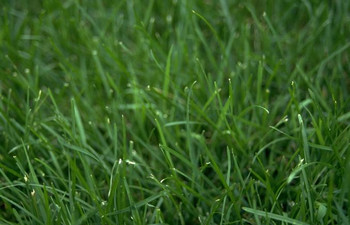How to Grow Wheatgrass
Learning how to grow wheatgrass is a way of having the vegetables that you want, without having to go to the store to buy out-of-date or low quality products. It’s rewarding to grow your own vegetables, if you have the time and energy to devote to nurturing produce, growing and harvesting them the correct way. Having a garden is a good way to enjoy nature, remain active and soak up some sunlight.
Learning how to grow wheatgrass is an activity to do with friends, where you can compare notes on specific ways to grow your wheatgrass and how you’ve experimented with different styles of growth or harvest. Wheatgrass produces so many different yields, that comparing notes is useful between planters. Consider starting your own gardeners club in your local community, to encourage this kind of communication.
Wheatgrass Facts
The following are a few wheatgrass facts. Wheatgrass is the grass produced by and adjacent to wheat plants. However ordinary seeming, wheatgrass is consumed by humans and animals for nourishment. Wheatgrass is thought by many to have medicinal properties.
Why Eat Wheatgrass?
The plant itself is a good source of chlorophyll, minerals, enzymes, vitamins and amino acids, though the extent of its effectiveness as a medicine or dietary aid varies depending on the source. This is a matter of debate among the growers and consumers of wheatgrass.
Some believe that wheatgrass has unique curative properties, while others disagree. Wheatgrass is marketed as a healthy product. Bars and juices sold as health foods make sure to include wheatgrass as a primary ingredient, because of its reputed benefits. Extracts from wheatgrass in powder form are also sold by health food stores.
When and Where Is Wheatgrass Grown?
Wheatgrass is best when grown as a natural byproduct of wheat or barley plants of the corn family, though it can be grown on its own. Since wheatgrass is not a large crop, you can grow it indoors in pots or plant containers.
If the seasons and environment are in your favor, you can grow wheatgrass outside in your own personal garden. Either way you decide to go about it, you need similar items.
- Watering can
- Spade or digging tool
- Manure or soil enriching product
- Soil
- Wheatgrass seeds
Additionally, if you choose to grow indoors, obtain a pot or container for your soil and plants.
Growing Wheatgrass

How to Grow Wheatgrass
When growing wheatgrass, the first thing to do after purchasing your wheatgrass seeds from the nursery is to soak them in water. Fill a jar or container about halfway full of water. Soak all of the seeds you want to plant for about 8 to 12 hours.
Preparing the Soil for Wheatgrass
Next, prepare your growing area. With grass-types of plants, you don’t need to worry much about the spacing of the seeds, or making specific rows in your garden or indoor potting system. In nature, these seeds are spread by the wind and through animal feces, so they are evolutionarily designed for randomized growth patterns scattered among different parts of the soil.
You want to use your soil and soil enhancement product in a 3 to 1 ratio or three portions soil for every equal part soil enhancement or manure.
Wheatgrass isn’t an extremely mineral-demanding plant, so don’t go overboard with the soil enhancement. Whether you do this in an indoor tray/pot or outside in your garden, the concept should be about the same. If you’re constructing the soil base in your home in some sort of container, you have more control over the portions of soil and other contents, as well as the disbursement of seeds and growth pattern.
Planting Wheatgrass
After the seeds are done soaking, till the soil lightly and with moderate vigor, using your spade or a similar tool. Spread the soaked seeds over the soil. You don’t need to bury the seeds, because this might be detrimental to the growth cycle and progress of your eventual plants.
Instead, take a mixture of soil and soil enhancement product and lightly spread it over the seeds, not necessarily completely obscuring them. Add enough of your soil mixture to somewhat cover, but where you can still tell the seeds are still there. For this process, you can use peat moss, if you have access to it.
Lightly water the entire patch with your watering can. A spray gun is another optional tool, as you can lightly water the plants with it. Carry on with light watering once in the morning and once in the evening, keeping the plants out of direct sunlight.
Some shade helps these plants thrive, though complete darkness gets you nowhere. Eventually, usually 10 to 12 days later, your grass will grow about 7” long. Harvest your crop by cutting ½ inch above the soil and enjoy the fruits of your labor.
